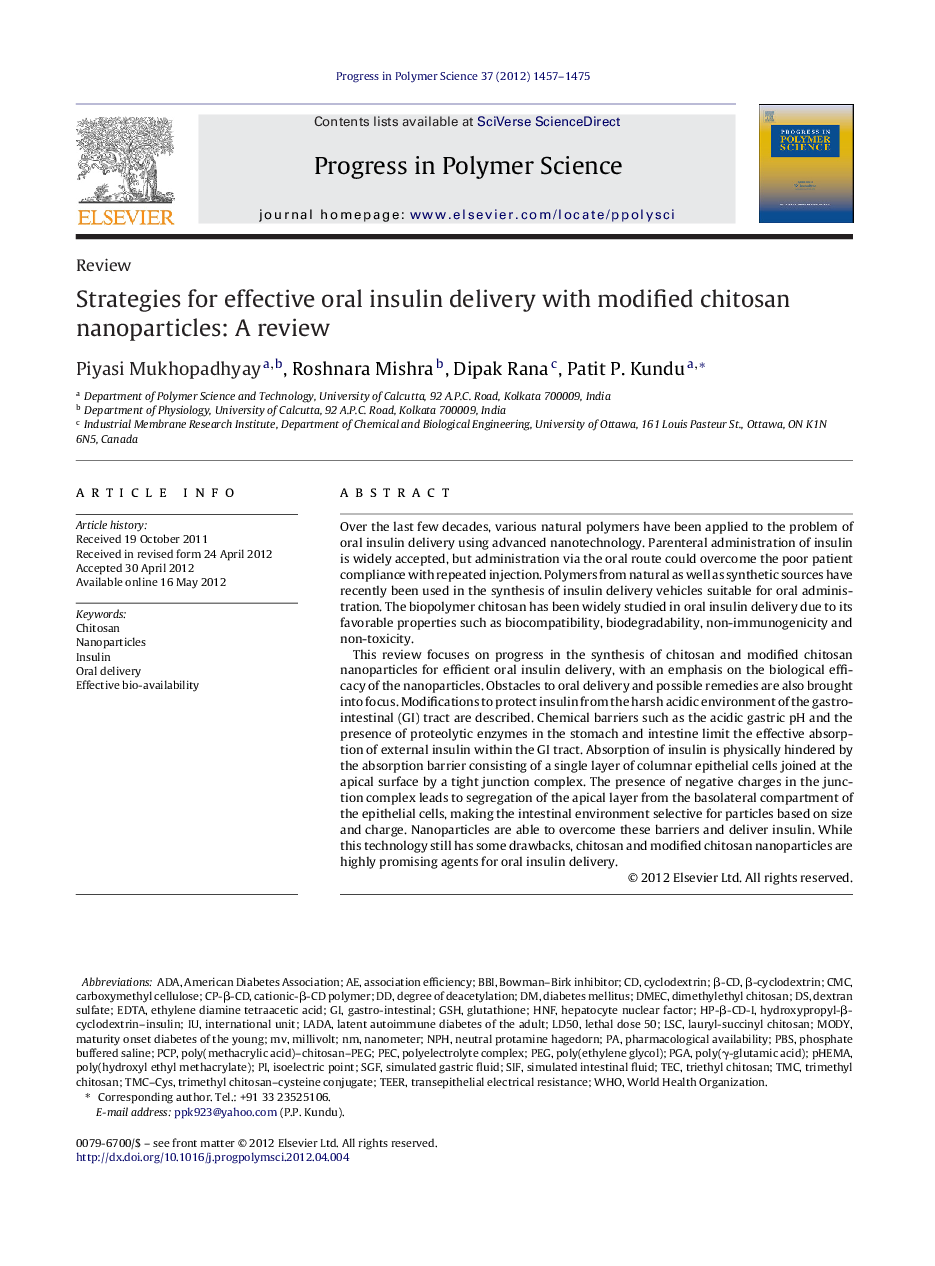| Article ID | Journal | Published Year | Pages | File Type |
|---|---|---|---|---|
| 5208385 | Progress in Polymer Science | 2012 | 19 Pages |
Abstract
This review focuses on progress in the synthesis of chitosan and modified chitosan nanoparticles for efficient oral insulin delivery, with an emphasis on the biological efficacy of the nanoparticles. Obstacles to oral delivery and possible remedies are also brought into focus. Modifications to protect insulin from the harsh acidic environment of the gastro-intestinal (GI) tract are described. Chemical barriers such as the acidic gastric pH and the presence of proteolytic enzymes in the stomach and intestine limit the effective absorption of external insulin within the GI tract. Absorption of insulin is physically hindered by the absorption barrier consisting of a single layer of columnar epithelial cells joined at the apical surface by a tight junction complex. The presence of negative charges in the junction complex leads to segregation of the apical layer from the basolateral compartment of the epithelial cells, making the intestinal environment selective for particles based on size and charge. Nanoparticles are able to overcome these barriers and deliver insulin. While this technology still has some drawbacks, chitosan and modified chitosan nanoparticles are highly promising agents for oral insulin delivery.
Keywords
Bowman–Birk inhibitorNPHTMCTEERSIFβ-CDSGFβ-CyclodextrinTECPCPGSHBBIpHEMAPECLD50association efficiencyPBSLSCDMECCMCPGApharmacological availabilityHnfEDTAethylene diamine tetraacetic acidAmerican Diabetes Associationinsulinmaturity onset diabetes of the youngTrimethyl chitosanOral deliveryDegree of deacetylationlethal dose 50Diabetes mellitusWorld Health OrganizationDextran sulfateCyclodextrinSimulated intestinal fluidsimulated gastric fluidhepatocyte nuclear factorPhosphate buffered salineLADAPolyelectrolyte complexMODYtransepithelial electrical resistancemillivoltNeutral protamine hagedornNanoparticlesnanometerIsoelectric pointinternational unitADAPoly(γ-glutamic acid)Poly(ethylene glycol)PEGCarboxymethyl celluloseWHOChitosanGlutathionegastro-intestinal
Related Topics
Physical Sciences and Engineering
Chemistry
Organic Chemistry
Authors
Piyasi Mukhopadhyay, Roshnara Mishra, Dipak Rana, Patit P. Kundu,
